What Malaysian Homeowners Should Know: The 5 Zones Kitchen
by Lanny Ho
Have you ever heard of a 3 Zone Kitchen? If yes, then THROW the 3 ZONE/kitchen triangle approach to kitchen design OUT OF HERE because that is OLD NEWS. Learn about what a kitchen designed with the 5 ZONES approach is capable of instead. It is the latest approach that interior designers utilize to optimize space and maximise convenience for homeowners.
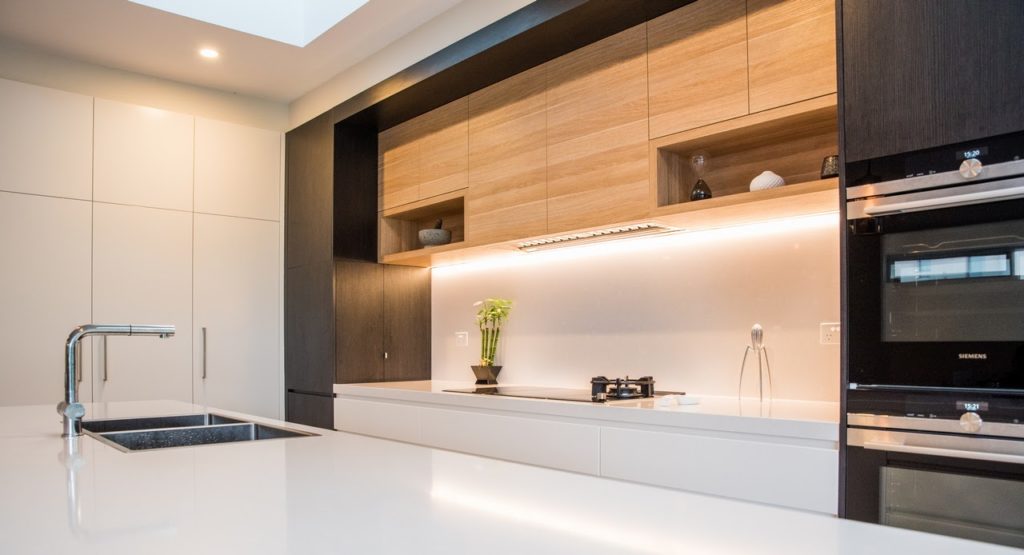
Through the 5 ZONES kitchen approach, each element in a kitchen design should be put there with a purpose and that purpose is only to make YOUR life easier. Remember the two key factors that make a 5-ZONE approach kitchen better than any other: (1) Quality of Motion and (2) Storage Optimisation. Designers will also design based on specific needs of the client AND still integrate the 5-ZONES approach so that there is still a high level of flexibility in aesthetics and design function.
Due to the recent pandemic, many Malaysians have actually homecooks themselves. Without realising, they may have transformed their idea of a kitchen space from one to heal the stomach to one that heals the soul instead. It isn’t as pragmatic anymore and many use cooking as a way to relax or an opportunity to enjoy their time at home. Open-concept kitchens (connected to either their living rooms or dining rooms or BOTH) are especially popular right now. Therefore, it is increasingly important to many homeowners everywhere that their kitchen space is one where they can cook, dine and feel entertained while doing so. This gives rise to the 5 ZONES approach to kitchen design.
WHAT ARE THE 5 ZONES?
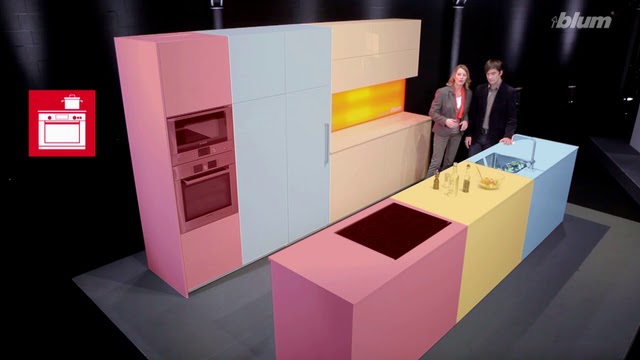
The 5 Zones are literally five zones that are designed to be closely connected work zones that give a kitchen a workflow that is both intuitive and convenient. The way in which the zones are situated in relation to one another is crucial to determine the efficiency in which a kitchen user and their household members can move and work around the space in the kitchen.
The 5 Zones are the; (1) Cleaning, (2) Consumable, (3) Non-Consumable, (4) Preparation, and (5) Cooking Zones.
CLEANING ZONE
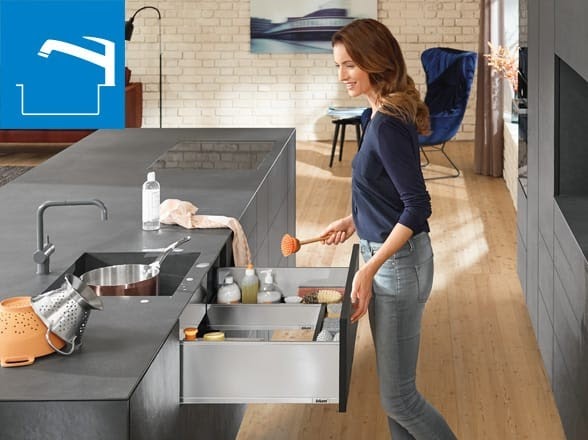
What is part of the Cleaning Zone? The dishwasher and sink are parts of the cleaning zone. This is the zone you can consider a “wet zone.” It can be where waste storage or waste separation is done and a place to store household cleaning supplies and utensils.
What is important? Designers and homeowners must make sure that there is sufficient space to store cleaning utensils and agents in the Cleaning Zone. Pull-outs under the skin basin can help make this zone more convenient and better organised. Orgaline inner dividing systems are recommended.
CONSUMABLE ZONE
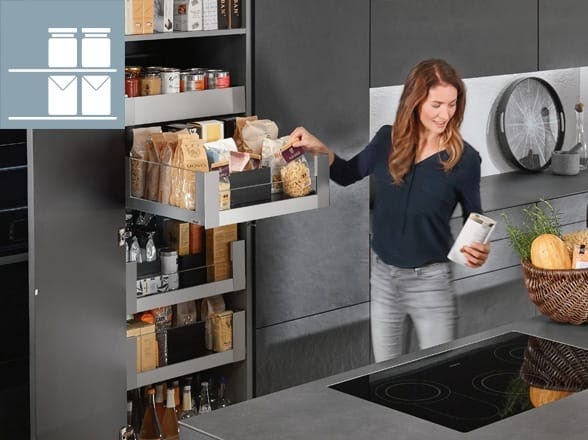
What is part of the Consumable Zone? The Consumable Zone is where food is stored. Anything that must be replenished over time can be stored in this zone. For example, items for cooking or baking. This zone includes space for these items to be refrigerated as well as items to be kept at room temperature. This is a zone where the closed packages are stored (Open packages would usually be placed in the Preparation Zone instead).
What is important? Designers and homeowners should ensure that the food can be easily and conveniently accessed when planning this zone. Not only that, one must also determine the amount of storage space that is required depending on one’s consumption habits. For example, if you are a household owner who consumes a lot because of your large household, then you would need more storage. You can add adjustable inner dividing systems to make this zone more easily organised and wider view.
NON-CONSUMABLE ZONE
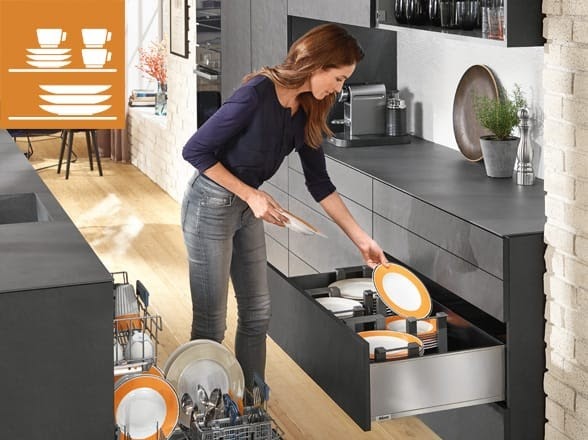
What is part of the Non-Consumable Zone? The Non-Consumable Zone is where cutlery, dinnerware, and glasses are stored. Basically, it is where you store things that are non-consumable (things you can’t eat or non-food items).
What is important to note? It would be ideal for the designer and homeowner to situate this zone near a dishwasher for more convenience. The storage items in the Non-Consumable Zone typically takes up more or less a third of the overall storage items in the kitchen. Due to the amount of items in this zone, it is important for us to arrange the items depending on the frequency of use. For example, putting them in a lower cabinet for it to be easier to reach.
PREPARATION
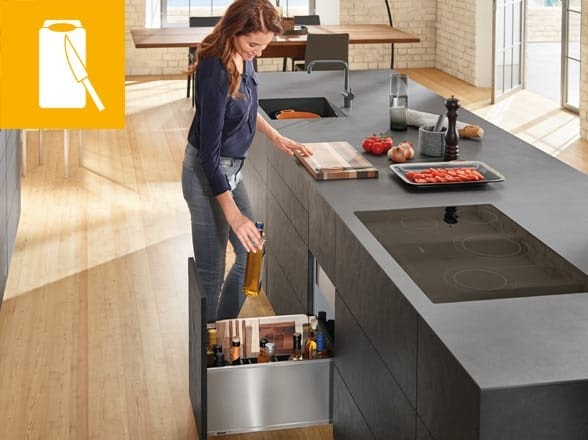
What is the Preparation Zone? The Preparation Zone is where the utensils that are typically used for food preparation is kept. For example, chopping boards, knives, oils, herbs, trays and so on. It is also where some open foodstuffs are placed because they are the ones that are most often used when making food preparations. This is also where the most of the work is done in the kitchen. This area is typically placed between the sink and the hob.
What is important to note for the Preparation Zone’s design? Designers and homeowners can utilize pull-out drawers in this zone to make sure that the utensils needed can be easily and quickly reached to put on top of the worktop countertop. Apart from that, it is also important for this area to be of sufficient size for enough space to work in as well as ensuring that it is well lit so that the preparation process can be done with more ease. The recommended size of this zone is 90cm in width.
COOKING
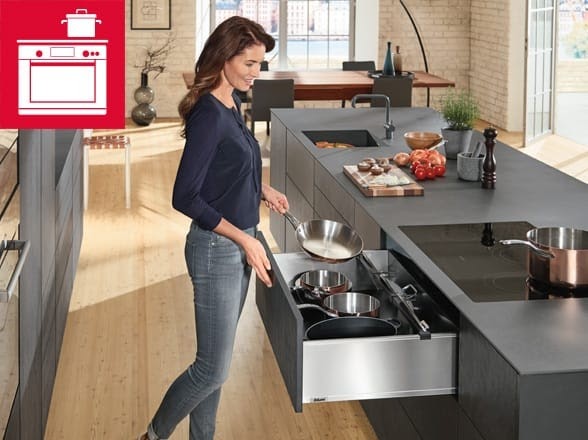
Finally, what is the Cooking Zone? The Cooking Zone is where the pots, pans, and cooking utensils are all located. The oven, microwave, extractor and hob are also usually placed in this zone. From the name of the zone itself, it is without a doubt the zone where you will do all your cooking.
What is important to take note regarding the Cooking Zone’s design? It is a good idea for designers and homeowners to keep the cooking zone near that hob (which is the built in stove top) in order to ensure that the pots and pans are within reach and can be quickly placed onto the cooking area. It is best if the cooking utensils that are most often used by the home cook are placed near the hob for quick and easy reach. If the homeowner is one that bakes very often, it is recommended for baking sheets and baking accessories to be placed near the oven for the homeowner’s baking needs.
Contact Favourite Livin for more details. Thanks for reading.

